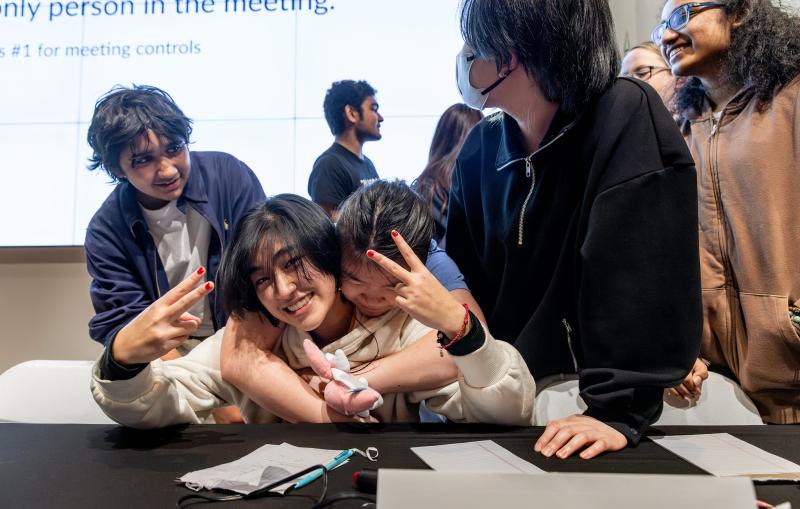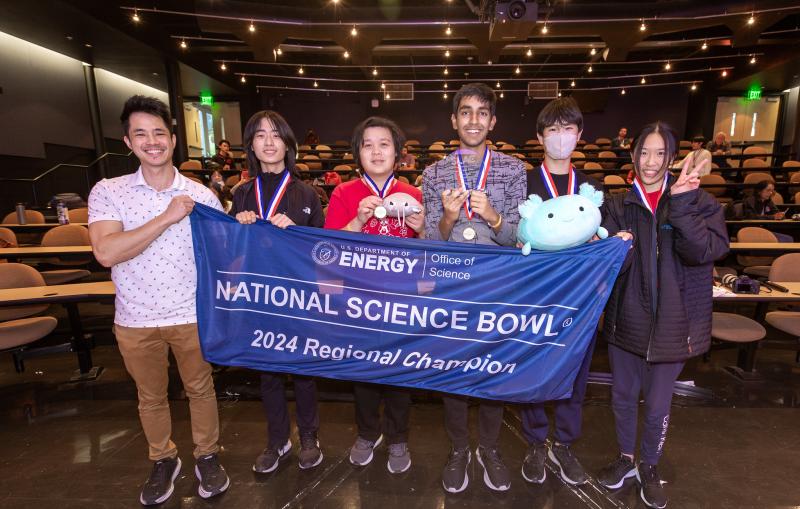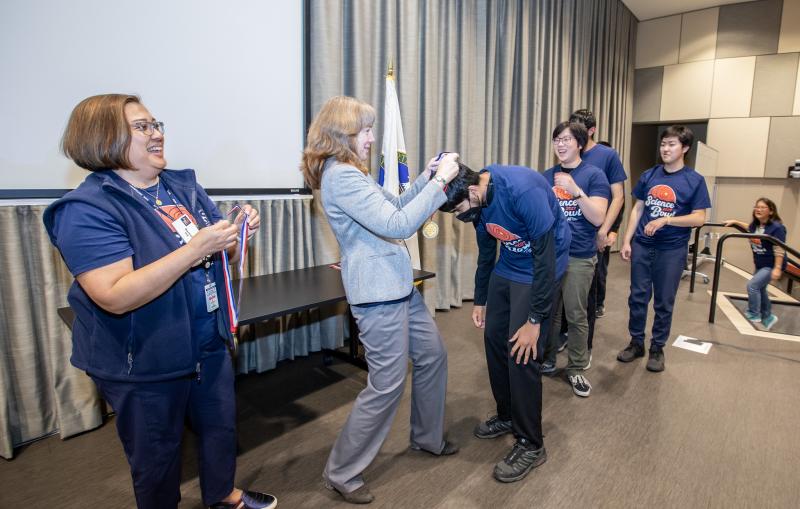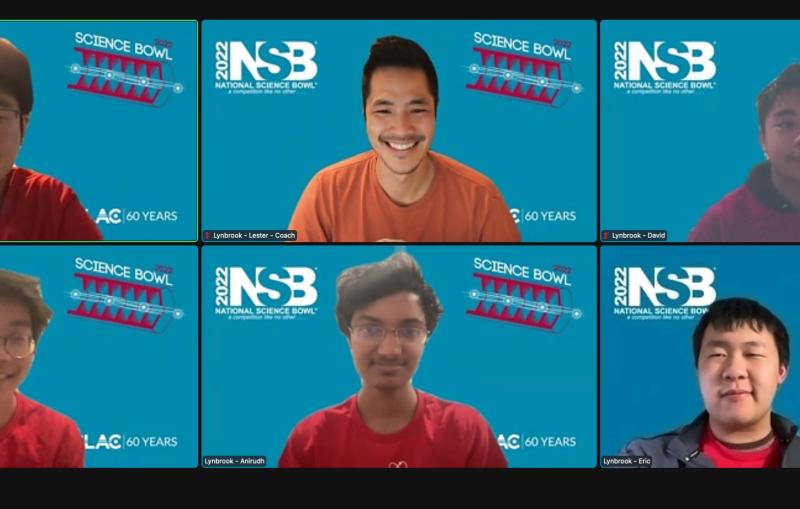SSRL and LCLS host 2024 Users’ Meeting
Scientists worldwide who conduct research at SLAC’s light sources shine light on latest discoveries and innovations in talks, workshops and discussions.
By Carol Tseng
Each year, the U.S. Department of Energy’s (DOE’s) SLAC National Accelerator Laboratory hosts the SSRL/LCLS Users’ Meeting where researchers who run experiments at SLAC’s Stanford Synchrotron Radiation Lightsource (SSRL) and Linac Coherent Light Source (LCLS) gather to listen to talks, participate in poster sessions and engage in workshops and discussions. This year’s meeting, held September 22-27, attracted 495 attendees, including 78 undergraduate and graduate students.
As DOE Office of Science user facilities, SSRL and LCLS are open to scientists around the world for experiments that use extremely bright X-rays to probe matter and ultrafast atomic-scale processes, shedding light on everything from biological and battery materials to the interiors of planets and stars.
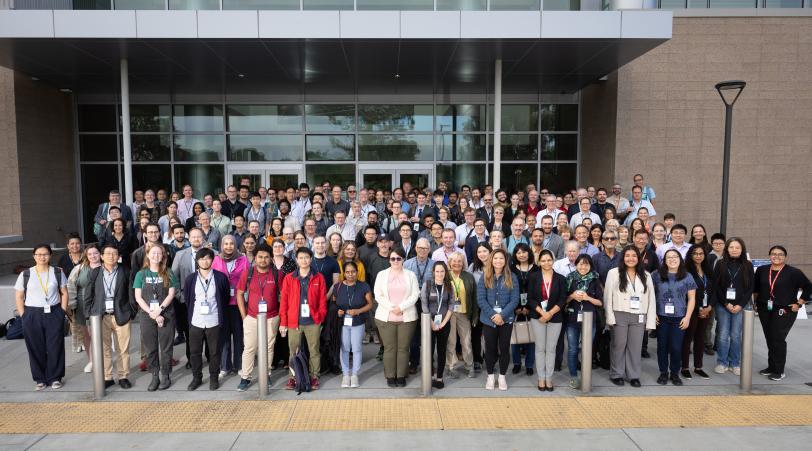
Over the course of the six-day event, sessions covered the latest research findings as well as current and future instruments and methods, providing community members from academia, research laboratories and industry an opportunity to discuss the latest science and technology.
SLAC Laboratory Director John Sarrao welcomed attendees during Wednesday’s plenary session, emphasizing how much the lab values the user community and their active collaboration. He thanked LCLS Associate Lab Director Mike Dunne, SSRL Associate Lab Director Paul McIntyre and Program Manager of X-ray and Neutron Scattering Facilities Dava Keavney from the DOE Office of Basic Energy Sciences for their leadership in helping SLAC deliver cutting-edge science. Sarrao concluded by thanking the community for “all the great science you do together with us.”
The meeting also provided an opportunity to announce the recipients of the annual LCLS and SSRL awards, including Takahiro Sato (LCLS Users’ Recognition Award), Adrien Descamps (LCLS Young Investigator Award), Haleh Alimohamadi (William E. and Diane M. Spicer Young Investigator Award), Christian Tanner (SSRL Scientific Development Award) and Keith O. Hodgson (Farrel W. Lytle Award). BioXFEL Poster Award winners include Jay Shenoy, Amanda Chen and Natasha Forrand. First place for the Joe Wong Poster Award was presented to Aria Duncan with additional awards going to Kejun Xu and Hannah Holmes.
The users meeting was organized by local and scientific organizing committees that included LCLS User Program Manager Leilani Conradson, Stanford-SLAC CryoEM Center User Administrator Lisa Dunn, LCLS User Program Coordinator Paul Jones, SSRL User Services Managers Cathy Knotts and Cara Laasch, LCLS User Program Coordinator Brittany Lemesh, LCLS User Program Coordinator Brandon Tan, LCLS User Programs Assistant Administrator Jessica Troxel, Utah State University Professor James Evans, University of Regensburg Principal Investigator Chitra Rajendran, SLAC Associate Staff Scientist Nicholas Hartley, SLAC Staff Scientist Adam Hoffman, Washington State University Professor Liane Moreau and SLAC Scientist Hasan Yavas.
SSRL and LCLS are DOE Office of Science user facilities.
Contact
For questions or comments, contact SLAC Strategic Communications & External Affairs at communications@slac.stanford.edu.
About SLAC
SLAC National Accelerator Laboratory explores how the universe works at the biggest, smallest and fastest scales and invents powerful tools used by researchers around the globe. As world leaders in ultrafast science and bold explorers of the physics of the universe, we forge new ground in understanding our origins and building a healthier and more sustainable future. Our discovery and innovation help develop new materials and chemical processes and open unprecedented views of the cosmos and life’s most delicate machinery. Building on more than 60 years of visionary research, we help shape the future by advancing areas such as quantum technology, scientific computing and the development of next-generation accelerators.
SLAC is operated by Stanford University for the U.S. Department of Energy’s Office of Science. The Office of Science is the single largest supporter of basic research in the physical sciences in the United States and is working to address some of the most pressing challenges of our time.

